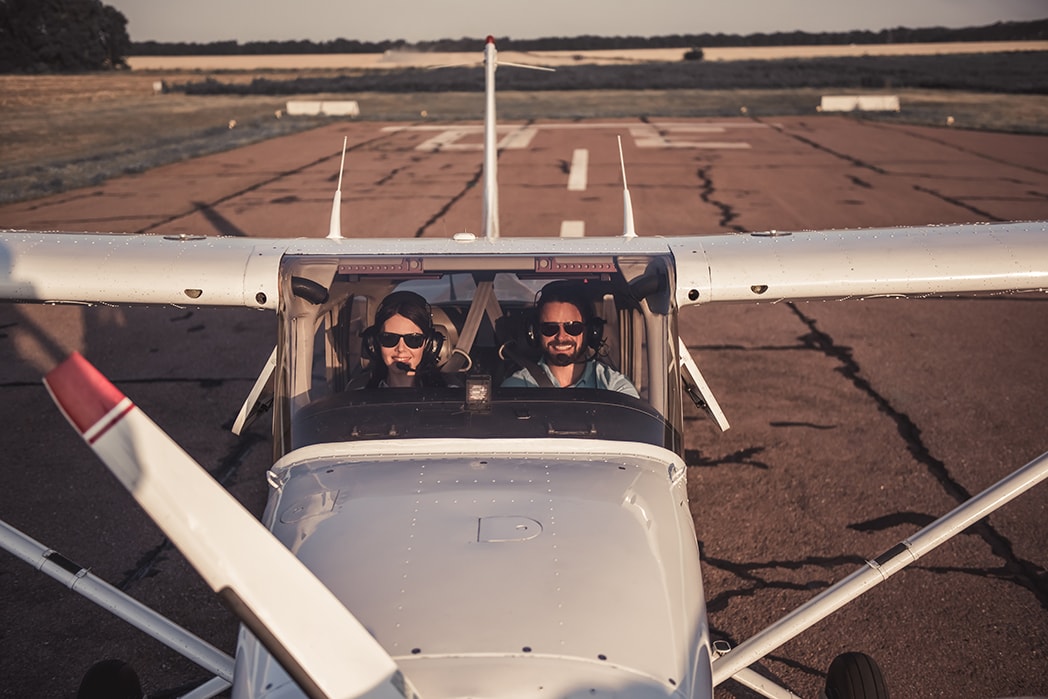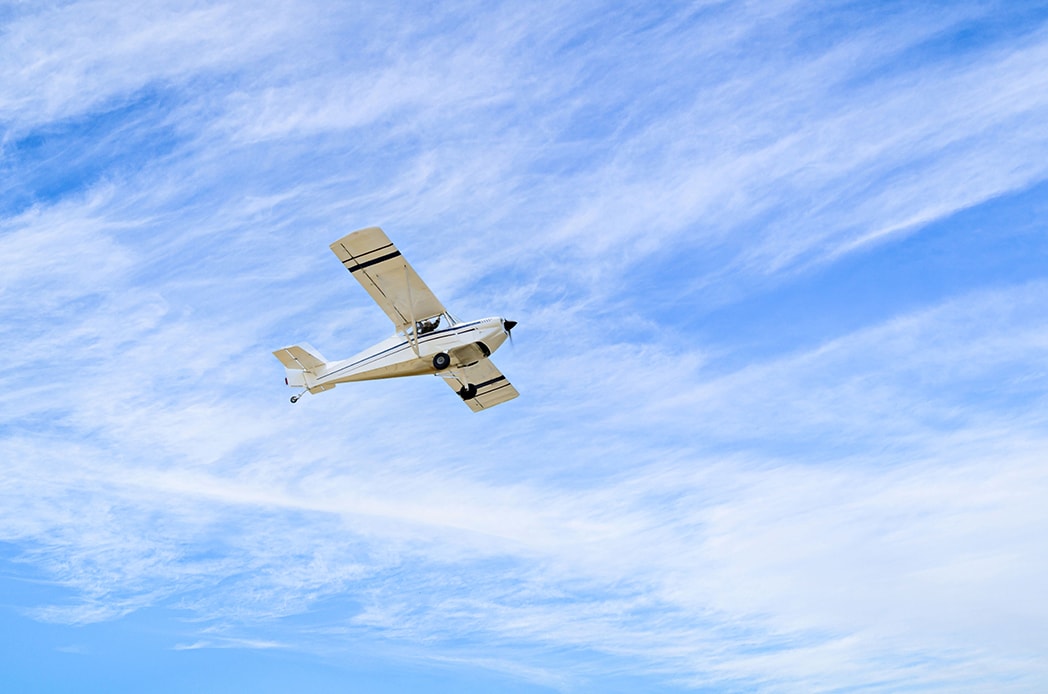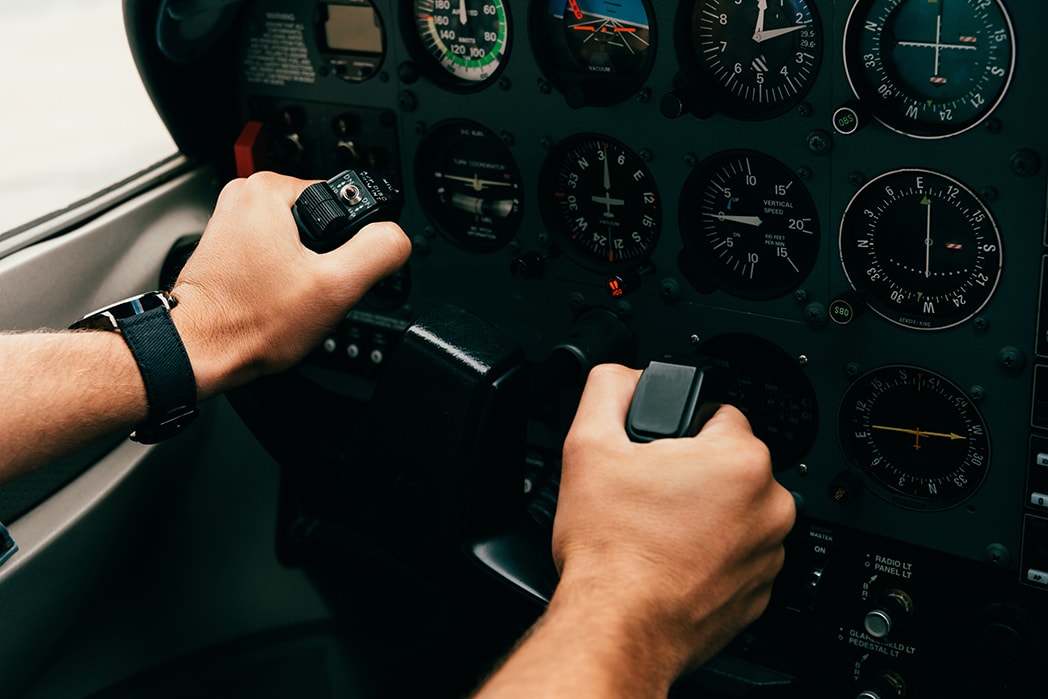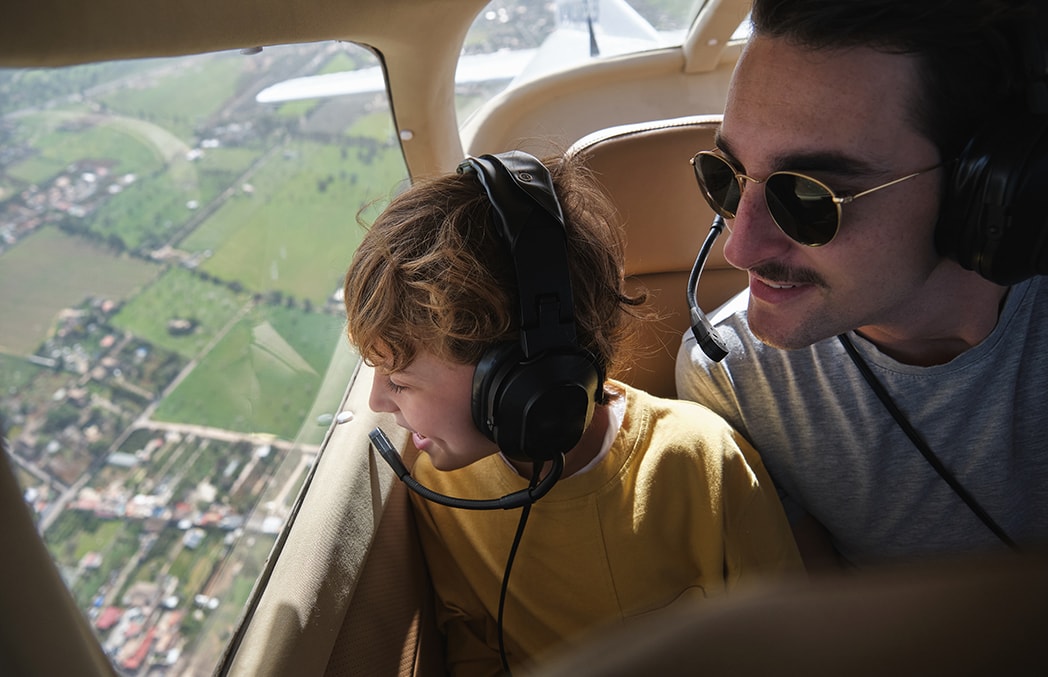Top Locations for Where to Take Flying Lessons: Your Guide to Becoming a Pilot
May 20, 2025
Want to become a pilot but not sure where to take flying lessons? This guide will highlight the best locations and essential tips for choosing the right flight school. Find out what you need to know to start your aviation training.
Key Takeaways
-
Choosing the right flight school means considering location, cost, instructor qualifications and aircraft maintenance for effective training.
-
Understanding the difference between Part 61 and Part 141 schools and independent and university affiliated programs is key to matching training to your needs and career goals.
-
Flight simulators are a vital part of pilot training providing a safe environment to practice, improve navigation and train for emergency scenarios without real world risk.
Introduction to Aviation
Aviation is cool and has so many career options if you love to fly. If you're wondering where to learn to fly, the journey begins with proper flight training, including ground school and flight instruction. The Federal Aviation Administration (FAA) governs the aviation industry and sets the standards for pilot certification.
You can choose from different types of pilot certificates, private pilot, commercial pilot and airline transport pilot. Flight schools like ATP offer full training programs that cover everything to become a professional pilot. With the right training and discipline anyone can learn to fly and pursue a career in aviation.
Eligibility and Requirements
To get a student pilot certificate you must meet certain requirements, be at least 17 years old, able to read, speak, write and understand English and not be prohibited from holding a certificate under 14 CFR 61.3. You must also submit an application through the Integrated Airman Certification and Rating Application (IACRA) website or by paper using FAA form 8710-1.
The application must be processed by a Flight Standards District Office (FSDO), an FAA designated pilot examiner, an airman certification representative associated with a part 141 flight school or a certificated flight instructor.
You must also pass a medical examination by an Aviation Medical Examiner (AME) to get a medical certificate. The cost of the application and medical examination may vary but most flight schools offer financing options or package deals that include the cost of the training program.
Choosing the Right Flight School
Choosing the right flight school is a big part of becoming a pilot. The training you get will have a huge impact on your success in getting your pilot certificate and will affect your entire flying experience. With so many options to choose from, you need to consider several key factors to make sure you get the best training.
When choosing a flight school, consider its location, cost, variety of aircraft for training and instructors qualifications. Each of these will impact how efficient and convenient your flight training will be. These are the things that should guide you in making an informed decision on where to start your journey to get your pilot certificate.
Location Matters
The location of a flight school near you or your work can have a big impact on how often you fly and the types of weather you get to fly in. Less travel time to a school means more consistent lesson attendance.
If a school is well located, you can get a variety of weather scenarios to enhance your overall aviation experience. Quality training is assured by checking the experience of flight instructors, the condition of their aircraft fleet and feedback from other students.
Cost Considerations

Flight training costs a lot of money as costs can vary greatly due to factors like instruction fees, aircraft rental and other miscellaneous charges. You need to understand all the costs you will incur including any hidden or extra costs.
Researching all the costs associated with these resources will help you manage your finances and avoid mistakes from unexpected expenses.
Aircraft Fleet and Maintenance
Your training depends on the condition and maintenance of a flight school’s aircraft fleet. You need to look at the number and condition of the planes and their maintenance records to ensure you are trained in a safe environment.
Training with schools that have a variety of complex aircraft in good condition will prepare you for different types of flying and aircraft.
Types of Flight Schools

Flight schools come in many forms, each with its own benefits and structure. Knowing the differences between these schools will help you choose the one that fits your learning style and career goals. The main types are Part 61 and Part 141 schools, university affiliated programs and independent flight schools.
Each type of school caters to different needs and preferences. Part 61 schools offer flexible schedules, Part 141 schools offer a structured curriculum, university affiliated programs offer academic degrees and pilot certifications and independent flight schools offer personalized training.
Here are more on these.
Part 61 vs. Part 141 Flight Schools
Part 61 schools offer more flexibility in scheduling and instruction styles which is perfect for students who have full time employment or other commitments. Part 141 schools follow an FAA approved syllabus which is what employers prefer.
If you are looking to get a private pilot license through a Part 141 school the required minimum flight hours are 35 hours, compared to the 40 hours required for a Part 61 school.
Additionally, both Part 61 and Part 141 schools require you to pass a written exam as part of the certification process. Understanding these differences will help you choose the right training path for your needs.
University-Affiliated Programs
Flight training programs affiliated with universities allow you to do flight training while getting higher education.
These programs often combine pilot certifications with academic degrees so you get a comprehensive education that develops critical thinking and application of knowledge in real aviation scenarios. It is important to explain the specifics and structure of these university-affiliated programs to help potential candidates understand what is required to pursue a career in aviation.
For those who want to progress in the aviation industry this combination can be very beneficial.
Independent Flight Schools
Standalone flight schools offer customized training programs to suit the different learning styles and schedules of their students, including solo flight experiences. Class sizes are smaller so more individualized instruction and instructor attention for each student.
Obtaining a private pilot license is a crucial milestone in the flight training process, as it requires meeting specific requirements such as necessary flight hours and the completion of exams. This kind of personalized approach is good for students who want a training experience that is tailored to their needs and flexible.
Flight Training Programs

Flight training programs vary depending on the pilot certificate you want to get, private pilot, instrument rating or multi-engine rating.
These programs are designed to provide prospective pilots with the skills and knowledge required for each certification. Flight instruction is a core component of these programs, ensuring students gain practical experience alongside theoretical knowledge. Knowing these programs will help you choose the right path for your aviation goals.
From private pilot certificate to advanced ratings including instrument and multi-engine, the journey is made up of different training courses, each with its own advantages and challenges for a professional pilot. Here’s an overview of the main programs available to those who want to become a pilot.
Private Pilot Certificate
To get a private pilot certificate you need to accumulate at least 40 hours of flight time which includes solo and cross country time.
One key requirement is demonstrating your ability to fly solo, which is both a thrilling and essential part of pilot training. You need to pass a written knowledge test, commonly referred to as the FAA knowledge test, and complete a practical test with an examiner approved by the FAA.
You need to get a third class medical to become a pilot. This medical certifies that you meet the health requirements to fly an aircraft safely.
Instrument Rating
An instrument rating gives you the skills to fly under Instrument Flight Rules (IFR) which is necessary when visibility is zero. By learning to navigate using instruments this rating makes you more competent to manage flight in all kinds of weather.
Getting an instrument rating not only makes you a better pilot and navigator but also makes you a safer pilot. The process involves intense training followed by a formal application for the rating where you gain valuable experience that adds to your aviation skills. Accumulating this experience is essential to qualify for airline employment, as it helps you gain the required 1,500 flight hours.
Multi-Engine Rating
If you want to fly commercial and airline transport category aircraft you need to get a multi-engine rating. This is key to learning how to fly an aircraft with multiple engines including how to handle engine failures.
Getting this rating not only advances your skills but also your job prospects in the aviation industry.
Finding the Best Flight Instructor

Choosing the right flight instructor is crucial as they are the key to successful pilot training. A good flight instructor will not only improve your training but tailor it to you.
Pick an instructor who is loved by their students and has availability to match yours so you can make steady progress in your training.
Talk to potential instructors during interviews to see how enthusiastic they are about teaching and helping you succeed.
Smaller class sizes at independent flight schools mean more personalized attention and flexible scheduling which equals a more individualized approach to developing your flying skills.
Instructor Qualifications
To be eligible to be a flight instructor an individual must have at least a commercial pilot license and have 250 hours of flight time. They must also have a Certified Flight Instructor (CFI) certificate which means they have plenty of flying experience.
Instructors can add to their qualifications with extra certificates like the Certificated Flight Instructor – Instrument (CFII) which allows them to teach instrument training. Awards like the FAA Gold Seal means they are highly proficient in flight training.
Compatibility and Teaching Style
Students need to find instructors whose teaching style suits them. Taking an intro flight is a good way to see if you click with the instructor’s teaching style. An instructor with a high pass rate on their first attempt students may indicate that instructor is dedicated to providing good instruction and teaching.
Utilizing Flight Simulators
Pilot training relies heavily on flight simulators which provide a risk free environment for pilots to practice. These simulators are designed to mimic real flying conditions so pilots can build muscle memory and practice complex maneuvers in different scenarios, especially in emergency situations.
By using these simulators within a structured framework pilot trainees can get experience in many scenarios at a fraction of the cost of actual flight hours. This type of practice not only sharpens navigation skills but also boosts confidence and proficiency in emergency procedures.
Advantages of Flight Simulators
Pilot training is much better with simulators which allows piloting skills to be developed in a controlled environment. Pilots can safely practice takeoffs, landings and instrument procedures. This improves navigation and confidence.
Simulators provide scenario based training that allows pilots to practice emergency situations without any actual danger.
Integrating Simulators into Training
Integrating simulators into flight training makes the learning process better by providing steady practice opportunities that are not weather dependent. Simulators allow trainees to practice communicating with Air Traffic Control (ATC) which is critical in real life flights.
By catering to different learning modes and providing instant feedback this integration makes learning more efficient and trainees can grasp and understand the training content faster.
Financial Aid and Scholarships
Pilots in training face big costs and financial aid and scholarships are available to help. The National Air Transportation Foundation offers scholarships and guidance for those pursuing aviation related education programs so you can overcome the financial hurdles.
Just like those who have served in the military can use their GI Bill benefits to pay for Part 141 flight schools. These benefits do not apply to Part 61 schools.
There are many organizations that offer various funding sources like scholarships, grants and loans for flight training. Financial institutions like Sallie Mae and Stratus Financial offer specialized loan programs to cover flight school tuition and other expenses. Knowing these financial options will help when it comes to managing the costs of getting your pilot license.
Applying for Scholarships
If you want to reduce the cost of flight training you should apply for scholarships. When applying make sure you show your passion for flying, what you want to do in the aviation industry and what specific goals you have for aviation.
Showing a strong commitment to completing flight training and getting endorsements will strengthen your scholarship application and increase your chances of getting funded.
Financing Options
Flight training can be financed through federal student loans, private loans and bank loans specifically for aviation. Personal loans for flight training have no maximum funding limit so you can use it to cover training costs and living expenses during your training.
Loan programs for flight training will help you learn to fly and manage the costs of getting your sport pilot license.
Safety and Regulations

Understanding and following FAA regulations is key to pilot safety during training. Teaching students risk management is a big part of overall flight safety.
Pilots need to practice and revisit emergency procedures regularly so they are prepared for anything that can happen during flight. Clear communication between flight crews and ATC is crucial to maintain high level of safety in flight.
Using flight simulators gives pilots in training a chance to hone skills in a safe environment, eliminating the risks of actual flying.
These simulators create realistic scenarios where aspiring pilots can build muscle memory while doing complex procedures under various conditions, including emergency scenarios. Practicing this way not only sharpens navigation skills but also builds confidence and proficiency in handling emergencies.
FAA Regulations
Student pilots must follow the FAA rules of training and operation. Understanding these rules is key to safety and compliance throughout training.
No endorsements are required on a student pilot certificate but those in training must familiarize themselves with all the rules and follow them to progress smoothly through the training process.
Safety Practices
Using flight simulators helps build pilot confidence and skills by practicing in a controlled risk free environment. Simulators improve technical skills and decision making skills for future pilots.
Having a clear communication plan with the flight instructor during training flights ensures safety, both parties are aware of and can manage any risks.

